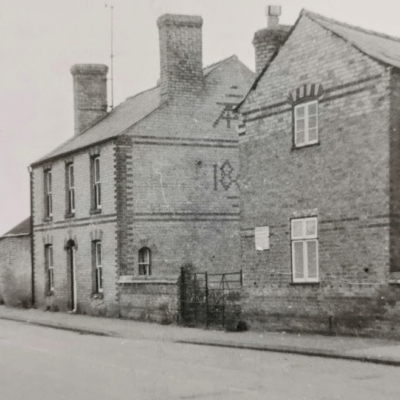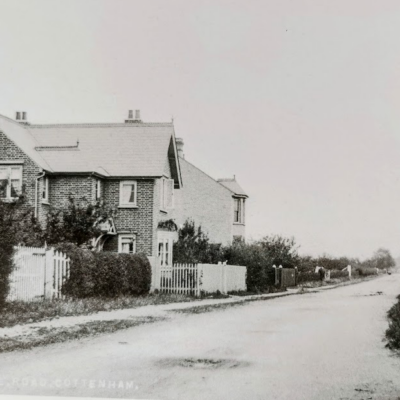Search by topic
- archaeology
- Building of Local Interest
- charity
- church
- crime
- dressmaker
- fire
- Great Eastern Railway
- Listed building
- Mapping Relief
- medieval
- oral history
- poverty
- Public House
- Rattee & Kett
- Religious House
- Roman
- scholar
- school
- Then and Now
- tudor
- women
- work
- world war one
- world war two
Search by text
 220 High Street, Cottenham, date unknown (photo E Smith)
220 High Street, Cottenham, date unknown (photo E Smith)220 High Street, Gothic House, Cottenham
History of 20 High Street
Probably c.1700. Some fragments of medieval stone in garden.
According to Cottenham in Focus, 2002, this house was built in the 1730s.
1733
from Francis Garrett, Cottenham Ablaze:
This is believed to have been the site of Vincent Wayman’s house, where now Gothic House, once the home of Mr Franklin, stands today. Vincent Wayman, a Quaker, experienced a fire and a loss of £1,215.
This building escaped the 1850 fire because it was brick and tile.
1770
Bought by the Ivatt family
1860
Significant alterations. The porch was erected, the ground floor lowered and decorative chimneys built. (See Cottenham in Focus, 2002)
1881 Gothic House
Frances Ivatt, 65, b Haddenham
Robert M, 29, farmer miller and maltster of 373 acres employing 24 men 5 boys, b Cottenham
Agnes Mary, daughter, 27, b Cottenham
Mary Anne Sadler, visitor, 42, b London
Lavinia Ivatt, 25, b Cottenham
Henry Robert Hughes, visitor, 19, student of theology, b Haddenham
Elizabeth Barlow, 21, cook, b Madingley
Alice Ward, 19, housemaid, b Coton
1891
Robert M Ivatt, 39, farmer and miller
Alice M, 32, wife, b London
Marguerite A, 3,
Josephine E, 2,
Cathleen F, 2,
Emily Sadler, visitor, 50, b London
Elizabeth J Kendrick, 16, housemaid, b Chatteris
1901
Robert M Ivatt, gardener
Alice M
Marguerite A
Josephone E
Kathleen F, 12, b Cottenham
Eugenie M, 8, b Cottenham
1913
Sold to Fred Chivers for £875
1943
Sold to Philips Franklin
Contribute
Do you have any information about the people or places in this article? If so, then please let us know using the Contact page or by emailing capturingcambridge@
License
This work is licensed under CC BY-NC-SA 4.0









